This is a 3-false color image of the region surrounding the W28 supernova remnant (SNR) that is located in our Galaxy. This image was created to look for new supernova remnants through their non-thermal (synchrotron) radio emission. Non-thermal sources in these images are colored blue, while massive star forming regions composed of thermal ionized hydrogen gas are colored white to cyan; warm thermal dust emission has been colored red. Including W28, two SNRs were previously known in this field of view, six new SNRs were discovered from this image.
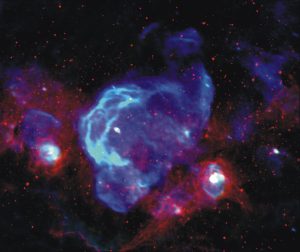
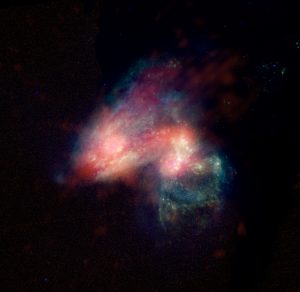
Arp 299
This colliding pair of galaxies is a region of vigorous star formation which has been investigated for many years. Since 1990, four supernova explosions have been seen optically in Arp 299. Observations with the Very Large Array (VLA) showed a region near the nucleus of one of the colliding galaxies which had all the earmarks of prolific star formation. Observations with the Very Long Baseline Array (VLBA) and the Green Bank Telescope (GBT) in 2002 and 2003 led to the discovery of 5 supernovae concentrated in this region. In this image, the radio data (in pink) have been merged with a visible light image of the pair from the Hubble Space Telescope.
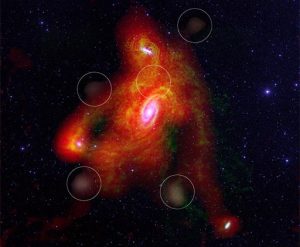
New Hydrogen Clouds in M81 Cluster
A composite radio-optical image shows five new clouds of hydrogen gas discovered using the Green Bank Telescope. The spiral galaxy M81 and its satellite, M82, are seen in visible light (white); the new hydrogen gas is colored red; and additional hydrogen gas earlier detected by the Very Large Array (green). The M81 Group of galaxies, 11.8 million light-years from Earth, are interacting gravitationally with each other, as shown clearly by the gas streaming among them. The newly-discovered gas clouds, each containing from 14 to 57 million times the mass of our Sun, are similar to gas clouds near our own Milky Way Galaxy. They are likely remnants of earlier interactions among the galaxies. Probably, the Milky Way has had a similar history.
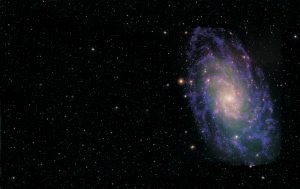
The Triangulum Galaxy in Radio and Optical
Galaxies contain hundreds of billions of stars. They often group together in clusters, with a history of sharing and tearing their gases and dark matter. This is the Triangulum Galaxy, also known as M33. It is in the Local Group of galaxies, which includes the Andromeda Galaxy and our galaxy, the Milky Way. M33 is over thirty thousand light years across, and more than two million light years away. The optical data show the many stars within the galaxy as well as reddish star forming regions that are filled with hot Hydrogen gas. The radio data from the Very Large Array (VLA) represented in blue, reveal the cool Hydrogen gas within the galaxy, gas which cannot be seen with an optical telescope. Combined together, the radio and optical give a more comprehensive view of star formation in this galaxy.
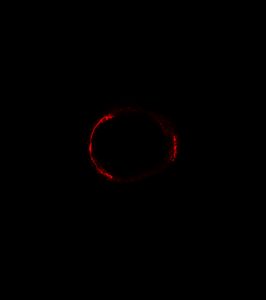
Einstein Ring in Stunning Image of SDP.81
ALMA’s highest resolution image ever of an Einstein Ring reveals the dust glowing inside the distant galaxy SDP.81. The ring structure was created by a gravitational lens that distorted the view of the distant galaxy into a ring-like structure.
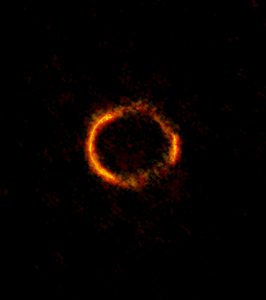
ALMA Sees Einstein Ring
ALMA image of the gravitationally lensed galaxy SDP.81. The bright orange central region of the ring (ALMA’s highest resolution observation ever) reveals the glowing dust in this distant galaxy. The surrounding lower-resolution portions of the ring trace the millimeter wavelength light emitted by carbon monoxide.





